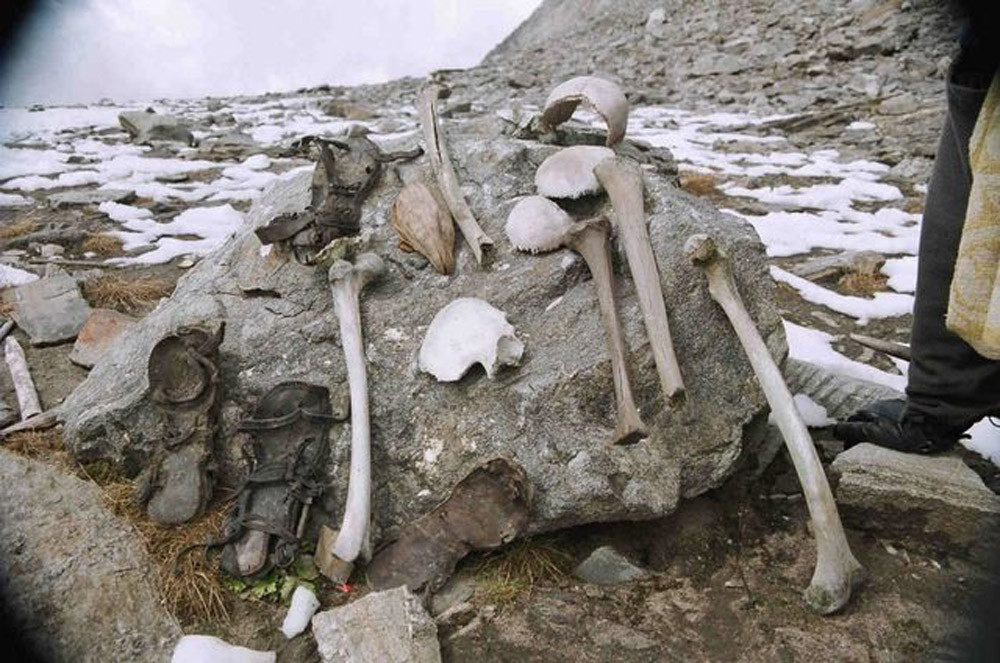Table of Contents
ToggleA Haunting Discovery in the Himalayas
Nestled high in the Himalayas, at an altitude exceeding 5,000 meters, lies a seemingly tranquil glacial lake that conceals a dark secret. Known as Roopkund Lake, or more ominously as “Skeleton Lake,” this remote body of water reveals a chilling spectacle each summer when the ice thaws: hundreds of human skeletons scattered across its shallow floor.

The Horrific Revelation
In 1942, the discovery of over 200 human skeletons at Roopkund Lake shocked the world. As further investigations continued, the full extent of this ancient tragedy became clear – more than 800 skeletons were found preserved in the lake’s icy waters. The lake’s desolate and forbidding setting only intensified the mystery surrounding these skeletal remains.

Theories and Speculations
For decades, the origins of these skeletons were a source of intense speculation. Theories ranged from the remains belonging to Japanese soldiers during World War II to victims of an ancient plague or even a ritual mass suicide. Local folklore added another dimension to the mystery, with stories of a king’s entourage punished by a goddess for desecrating the sacred mountains with their revelries.

Unraveling the Mystery
Scientific Breakthrough
It wasn’t until the early 2000s that modern science began to shed light on this ancient enigma. In 2003, a collaborative study among Indian, German, and American researchers initiated an extensive investigation of the site. Using DNA analysis and radiocarbon dating, they gained valuable insights into the origins and fate of these long-forgotten individuals.

The Pilgrims’ Tragic Journey
Researchers determined that the skeletons belonged to two distinct groups of Indian pilgrims from around 850 AD. One group consisted of shorter individuals, likely local guides, while the other was made up of taller individuals from a more distant region. Remarkably, some individuals displayed unique genetic traits linked to a specific area in Maharashtra, in central southern India.

Nature’s Deadly Assault
The final clue was found upon examining the skulls. Each victim bore similar fatal injuries to the backs of their heads, consistent with impacts from rounded objects. Scientists concluded that these pilgrims perished in a sudden and violent hailstorm. Massive hailstones, possibly traveling at speeds over 160 km/h, struck them down, leaving them no chance to escape in the harsh terrain.

A Testament to Nature’s Power
The mystery of Roopkund Lake stands as a somber reminder of nature’s unpredictable and sometimes deadly forces. The lake’s high altitude and frigid conditions preserved these remains for over a thousand years, creating a time capsule of this tragic event.

Today, Roopkund Lake continues to captivate scientists and adventurers alike. Visible only when the ice melts each year, it remains a haunting and unique testament to human vulnerability in the face of nature’s might.

